Volume 15, Issue 1
Displaying 1-4 of 4 articles from this issue
- |<
- <
- 1
- >
- >|
Original article
-
Article type: original article
2010 Volume 15 Issue 1 Pages 1-9
Published: 2010
Released on J-STAGE: September 01, 2010
Download PDF (183K)
Commentary
-
Article type: review
2010 Volume 15 Issue 1 Pages 11-21
Published: 2010
Released on J-STAGE: September 01, 2010
Download PDF (426K)
Information/Notes
-
Article type: information / notes
2010 Volume 15 Issue 1 Pages 23-30
Published: 2010
Released on J-STAGE: September 01, 2010
Download PDF (487K)
Proceedings of the 15th Annual Meeting of Japanese Society of Pharmacoepidemiology
-
Article type: President's lecture
2010 Volume 15 Issue 1 Pages 31-43
Published: 2010
Released on J-STAGE: September 01, 2010
Download PDF (1057K)
- |<
- <
- 1
- >
- >|
